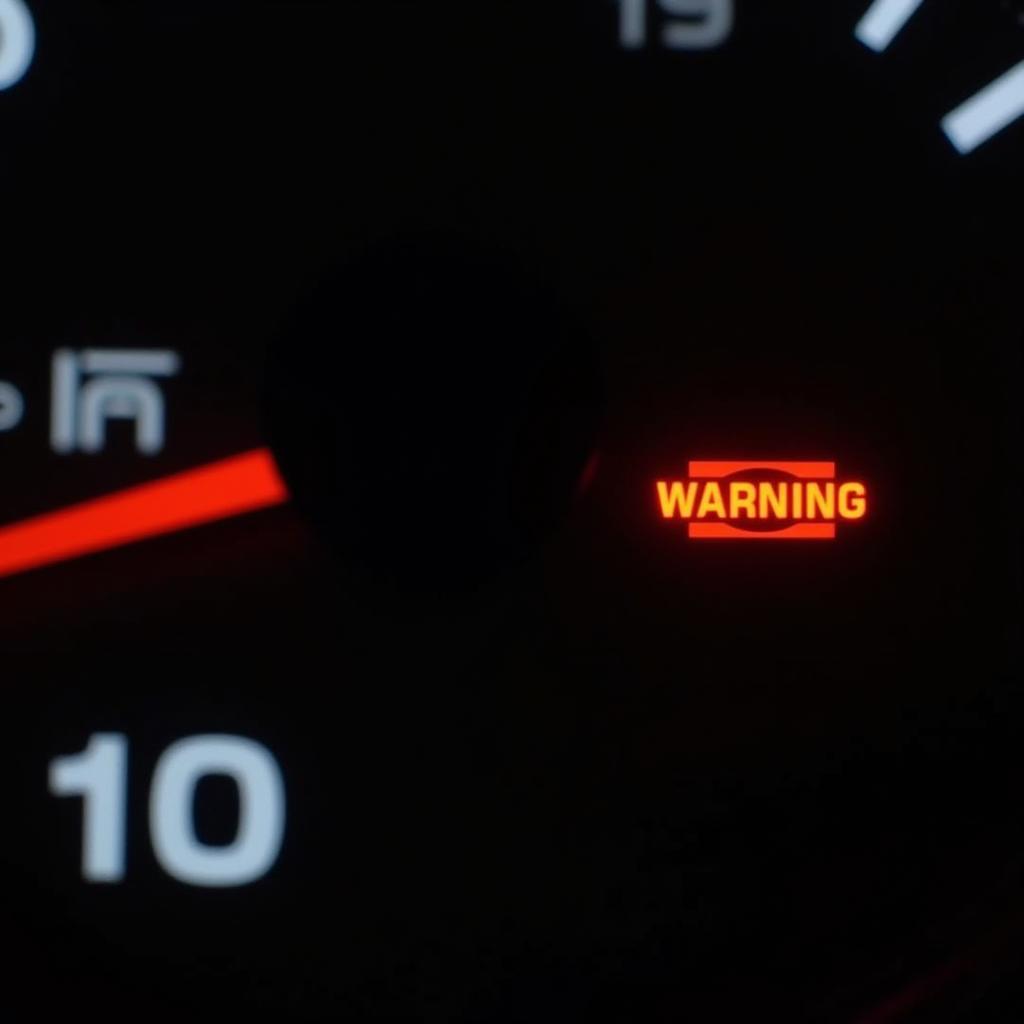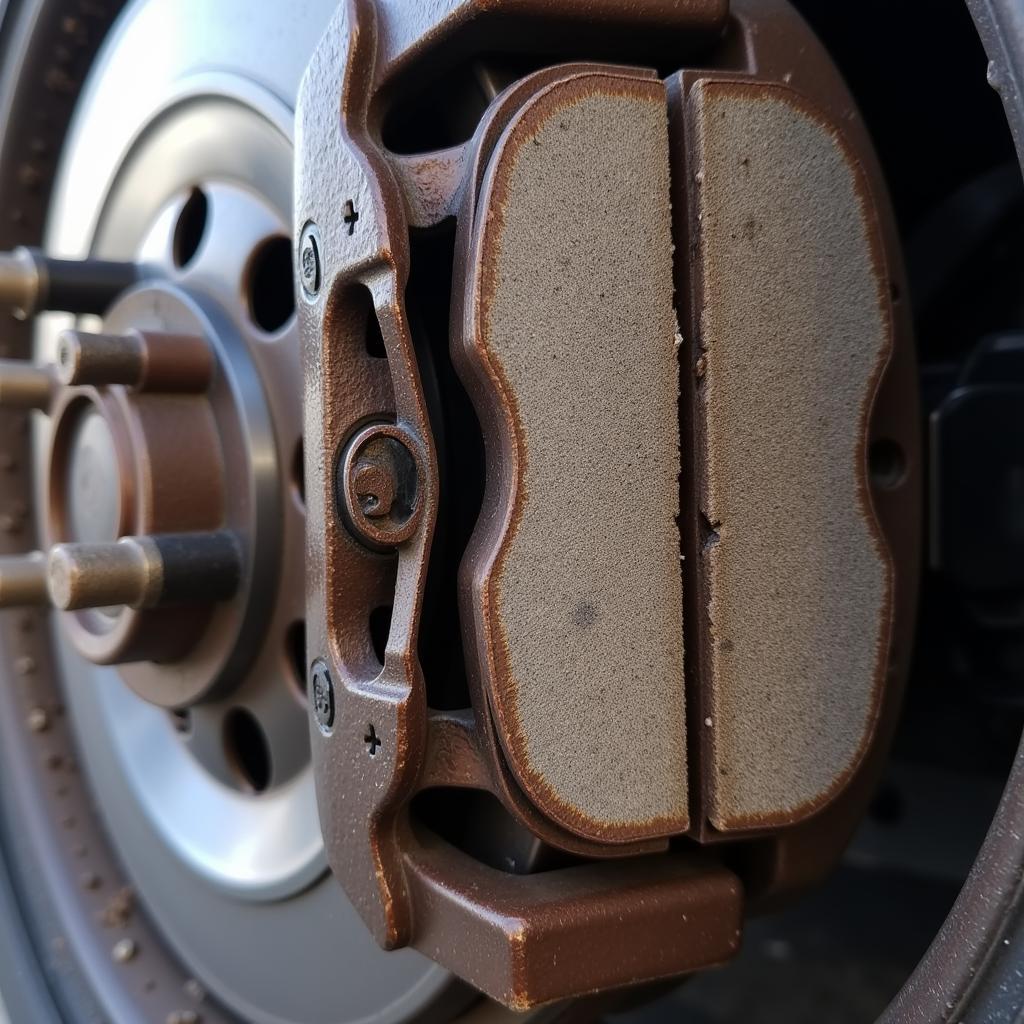The BMW E36, a true automotive icon, is admired for its driving dynamics and timeless design. However, like any vehicle, it can encounter electrical glitches, and one common issue is the dreaded “brake light circuit” warning. This article serves as your guide to understanding, diagnosing, and resolving this issue, ensuring your E36 remains safe and roadworthy.
 BMW E36 Dashboard with Brake Light Circuit Warning
BMW E36 Dashboard with Brake Light Circuit Warning
Common Causes of the Brake Light Circuit Warning
The brake light circuit warning on your E36’s dashboard signals a problem with the electrical system responsible for illuminating your brake lights. Several culprits can trigger this warning, ranging from simple bulb failures to more complex wiring issues.
1. Burnt-Out Brake Light Bulbs
The most frequent offender is often the simplest: a burnt-out bulb. The E36, like most vehicles, uses incandescent bulbs prone to burning out over time.
How to Check:
- Inspect Visually: Have someone press the brake pedal while you check if both brake lights illuminate.
- Remove and Inspect: If a bulb appears burnt, carefully remove it from its socket and inspect the filament for breakage.
 Mechanic inspecting a BMW E36 brake light bulb
Mechanic inspecting a BMW E36 brake light bulb
2. Faulty Brake Light Switches
The brake light switch, positioned above the brake pedal arm, plays a critical role in activating your brake lights when the pedal is pressed. A malfunctioning switch can disrupt this process, triggering the warning.
How to Check:
- Locate the Switch: Identify the brake light switch, usually located above the brake pedal arm under the dashboard.
- Test for Continuity: With the ignition off, use a multimeter to test for continuity across the switch terminals. The multimeter should read continuity when the pedal is pressed and no continuity when released.
3. Wiring Problems
Over time, the wiring within the brake light circuit can become damaged or corroded, disrupting the flow of electricity and triggering the warning light.
How to Check:
- Visual Inspection: Carefully examine the wiring harness leading to the brake lights, looking for any signs of fraying, cracking, or corrosion. Pay close attention to areas where the wiring might rub against metal parts.
4. Faulty Light Sockets
Corrosion or damage to the light sockets themselves can prevent the bulbs from making proper contact, leading to a brake light circuit warning.
How to Check:
- Inspect for Damage: Examine the sockets for any signs of corrosion, bent contacts, or damage. Clean or repair as needed.
Remote Diagnosis and Solutions
Advancements in automotive technology now allow for remote diagnosis and, in some cases, even remote solutions for certain vehicle issues.
“The ability to remotely diagnose issues like brake light circuit warnings is a game-changer. It allows us to pinpoint problems quickly and efficiently, often saving car owners a trip to the mechanic,” says Alex Richards, a senior automotive electrical engineer at a leading telematics company.
While a remote diagnosis might not always provide a definitive solution, it can offer valuable insights into the problem and guide you towards the appropriate repair.
Conclusion
Addressing a “brake light circuit warning” in your BMW E36 is crucial for your safety and that of others on the road. While this article provides a comprehensive overview of common causes and diagnostic approaches, remember that seeking assistance from a qualified mechanic is always recommended, especially if you are uncomfortable working with electrical components. By understanding the potential issues and taking the necessary steps to diagnose and resolve them, you can ensure your E36 continues to deliver a safe and enjoyable driving experience.
Frequently Asked Questions:
-
Can I continue driving with the brake light circuit warning on?
It’s strongly advised against driving with this warning light illuminated. Your brake lights are essential for signaling to other drivers, and driving without them poses a significant safety risk.
-
How much does it typically cost to fix a brake light circuit issue?
The repair cost varies significantly depending on the underlying cause. A simple bulb replacement can be very affordable, while a complex wiring repair might be more expensive.
-
Can I fix a brake light circuit problem myself?
If you have some mechanical aptitude and are comfortable working with basic electrical components, you might be able to address simple issues like bulb replacements. However, for more complex problems, it’s best to consult a qualified mechanic.
-
Is the brake light circuit warning related to the ABS system?
While both systems relate to braking, they are independent. The brake light circuit warning specifically pertains to the electrical circuit that controls your brake lights, while the ABS warning light signals an issue with the Anti-lock Braking System.
-
How often should I check my brake lights?
It’s good practice to inspect your brake lights at least once a month. You can do this visually or have someone press the brake pedal while you observe from behind.


